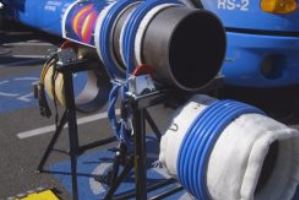 Red-D-Arc’s guide to post-welding operations: heat treatment and finishing
Red-D-Arc’s guide to post-welding operations: heat treatment and finishing
April 30, 2020 REDWIRE is news you can use from leading suppliers. Powered by FRASERS.
Posted by Red-D-Arc Welderentals
Offers A Full Range Of Rental Welding And Positioning Equipment For A Variety Of Processes And Applications... Read more
Subscribe
Free REDWIRE e-newsletter

Post-weld processes are often necessary.
Businesses everywhere benefit from the welding equipment available from Red-D-Arc Welderentals. As with many other manufacturing and fabrication processes, a welding project is never complete until workers have conducted the necessary post-processing tasks. These post-welding operations are typically performed to improve mechanical properties, relieve stress, and boost aesthetic appeal.
A recent blog entry by Red-D-Arc discusses the two most common post-welding operations: post-weld heat treatment, or PWHT, and finishing.
Two types of PWHT
The high temperatures involved in welding can cause micro-structural changes in the materials, while natural cooling builds up residual stresses in them. PWHT is required to prevent compromise in the mechanical properties of the materials caused by these stresses and structural changes. The two main types of PWHT are post-heating and stress relieving.
Post-heating prevents hydrogen-induced cracking, which results from the permeation of material by high amounts of ambient hydrogen. It happens immediately after welding, before the material cools. Workers heat welded material to a specific temperature for a certain period, allowing the hydrogen to diffuse out of the welded area. In stress relieving, workers allow the welded material to cool naturally, then heat it up to a specified temperature for a specific amount of time. Then the material is cooled gradually at a certain rate. This relieves stresses that may have built up during the welding and cooling.
Heating systems typically supply the necessary heat in both PWHT methods. Red-D-Arc recommends its Miller Induction Heating Systems for this purpose, as they offer uniform heating, precise temperature control, and power efficiency. Not all welded materials require PWHT; this process is more likely to be needed with high levels of alloying elements like carbon, and more PWHT is required with thicker material.
The other common type of post-welding operations is finishing. Welding usually leaves a visible seam along the welded areas, which diminishes the aesthetic appearance. Finishing has two steps, grinding and polishing. Grinding involves using an abrasive to level the welded area, making it consistent with the material surface. Polishing uses gentler abrasives with polishing compounds to produce a neat surface finish.
To learn more, contact Red-D-Arc.
Share
Posted by Red-D-Arc Welderentals
Offers A Full Range Of Rental Welding And Positioning Equipment For A Variety Of Processes And Applications... Read more